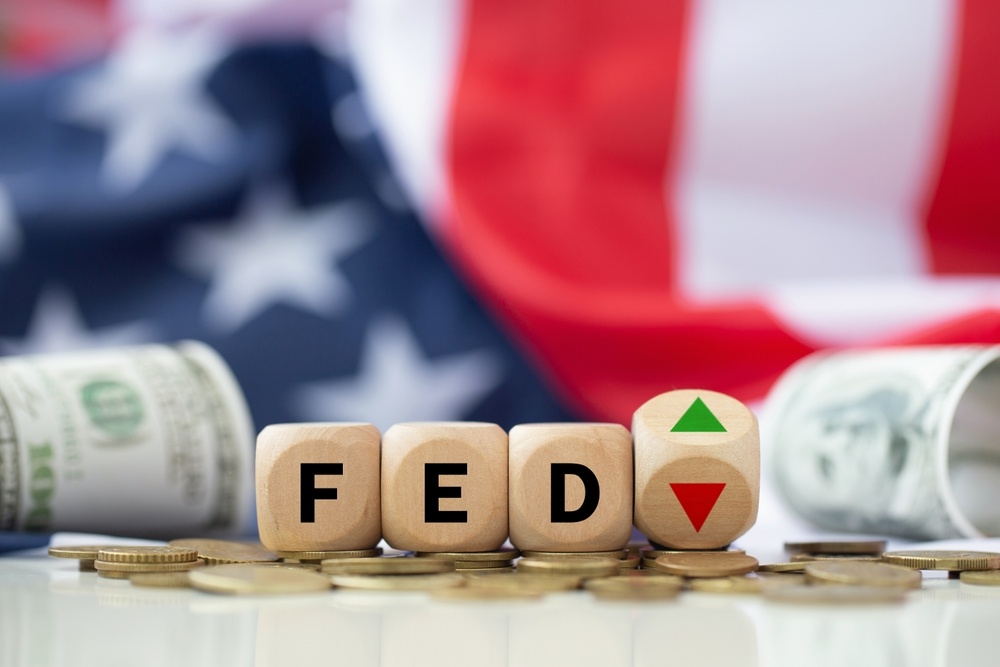Why does the Fed dare to cut interest rates by 50 basis points at a time??There are two main reasons behind
The Federal Reserve one-time interest rate cut of 50 basis points, in fact, behind the hidden two main reasons, respectively, “the curve of interest rate normalization” and “unemployment rate is expected to rise”.

The Fed's one-time rate cut of 50 basis points, in fact, behind the two main reasons, respectively, is the “interest rate normalization curve” and “unemployment rate is expected to rise”.
Interest rate normalization curve refers to the Federal Reserve in July employment report data show weakness, there is the intention to cut interest rates, however, but because the July FOMC meeting as early as the employment report data published before the end of the meeting, and the resolution does not cut interest rates, so the Federal Reserve should then cut interest rates into the magnitude of the interest rate cuts, so the final decision to cut interest rates by 50 basis points.
Fed Chairman Powell mentioned in the press conference, if the policymakers in the July meeting is known to July's employment report data performance is weak, they may decide to cut interest rates at that time. He stressed that, even so, today's sharp cut of 50 basis points shows the Fed's “commitment not to fall behind” the curve of interest rate normalization, and described the cut as “a strong move”, reflecting the Fed in the face of the economic slowdown, the Fed is willing to take The Fed's willingness to take proactive measures to stabilize the economy in the face of a slowdown.
Unemployment rate is expected to rise from the Federal Reserve's latest forecast. The Fed's latest economic projections show that the unemployment rate is expected to rise to 4.4% by the end of 2024, higher than the current 4.2%, reflecting the pressure that slower economic growth may put on the job market. The Fed therefore sees a need to cut interest rates by 50 basis points to boost the economy and boost the job market.
Even so, Powell remains confident in the U.S. economic outlook, believing that the labor market is still close to a state of full employment and is confident of avoiding a significant rise in the unemployment rate. The economic growth rate forecast for the next few years is 2%, showing that the Federal Reserve believes that economic growth will remain stable, but the pace will not be too fast.
The Fed cut its benchmark interest rate by 50 basis points this time, exceeding some market expectations. The original market for the rate cut 25 basis points or 50 basis points of expectations for each half, the final rate cut of 50 basis points reflects the Fed's trade-off between inflation and economic conditions. Powell emphasized that this does not represent a fixed pace of future rate cuts, and future policy will be adjusted based on economic data.
The Fed noted in the updated interest rate dot plot, is expected to cut interest rates in the meeting in November and December this year will be another 50 basis points, that is, each meeting may be reduced by 25 basis points each. In addition, another 100 basis points of rate cuts are expected next year, suggesting the possibility of continued monetary easing by the Fed in the future. Over the long term, the end point for interest rates will likely fall in the 2.75% to 3% range, rather than returning to the ultra-low levels seen before the epidemic.
After the Fed cut rates, the U.S. stock market and Treasury prices saw an uptick, and the U.S. dollar weakened. However, Powell said in his press conference that there was no rush to further loosen monetary policy, which caused stocks to eventually give back earlier gains. S&P 500 and Nasdaq Composite Index fell 0.3%, Treasury yields fluctuated little, indicating that the market's reaction is mainly “buy in the rumor, sell in the fact” phenomenon. Although the Fed's rate cut supported the market in the short term, investors are still cautious about the long-term uncertainty of future economic growth.
It is worth noting that the decision to cut interest rates appeared since 2005 for the first time since 2005 FOMC members of the dissenting vote, which is since 2005 for the first time FOMC members of the interest rate decision to raise objections.
Fed Governor Michelle Bowman voted in favor of a 25 basis point rate cut instead of 50 basis points. She has said on several previous occasions that inflation is not yet fully under control and that rates should be cut cautiously to avoid overly aggressive easing. Powell also acknowledged dissent within the committee at the press conference, but emphasized that the overall decision was broadly supported and that policymakers still have a unanimous consensus on the long-term goal.
Disclaimer: The views in this article are from the original Creator and do not represent the views or position of Hawk Insight. The content of the article is for reference, communication and learning only, and does not constitute investment advice. If it involves copyright issues, please contact us for deletion.